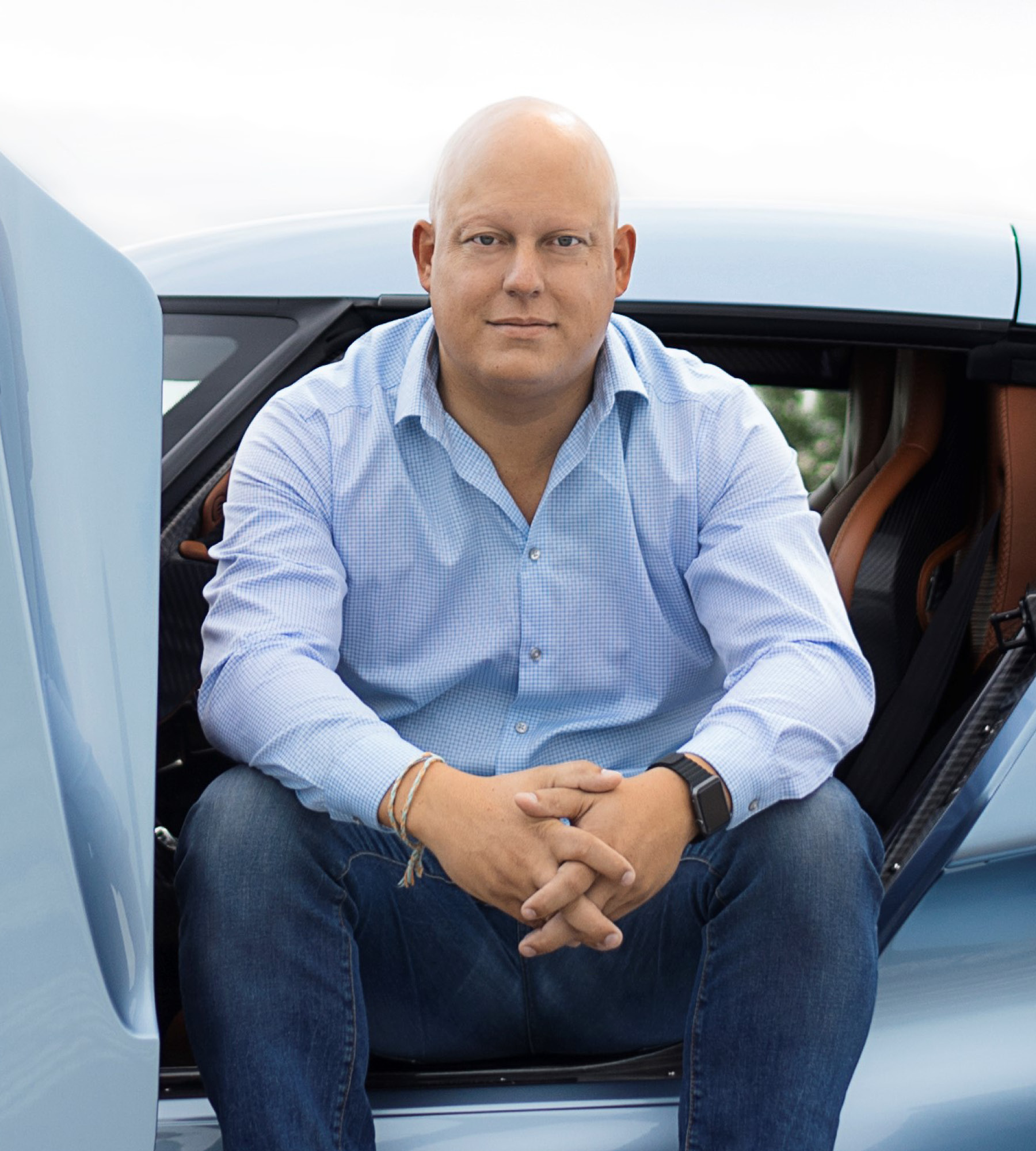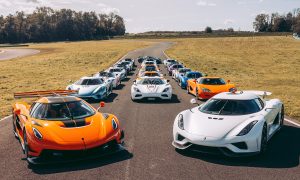Language
You can read the magazine in one of the following languages
Christian von Koenigsegg was just 22 when he had the light bulb moment that would shape the future course of his life: to build the best sports car in the world.
Less than inspired by the day-to-day of the import-export business he had founded, and energized by watching the classic Norwegian film The Pinchcliffe Grand Prix, the Stockholm native threw himself into making his dream a reality.
“My business idea was far from bulletproof. In fact, it didn’t make sense at the time,” the Founder and CEO of now legendary supercar marque Koenigsegg Automotive tells The CEO Magazine.
The years between 1994 and 1996 passed by in a blur before his prototype vehicle, called CC, made its first public appearance at the Anderstorp Raceway in Sweden with legendary driver Rickard Rydell behind the wheel. In 2002, the first Competition Coupe V8 Supercharged rolled out of the workshop as the brand’s first road-legal car (only six were made in total).
As he reflects on those early days, von Koenigsegg says that the greatest obstacles he overcame were financial in nature.

“The market wasn’t asking for what I had started developing, and that itself was a big challenge.”
“Building the company from nothing and without bigger financial backing that could cover development costs was extremely challenging,” he reveals.
With the funds from the sale of the first car, he was able to start building his second one.
“When that was sold, it gave us money for yet another car and the cycle continued,” he explains.
In the 1990s, the hypercar market was completely different to today.
“The market wasn’t asking for what I had started developing, and that itself was a big challenge,” he says.
What he lacked in funds, however, he made up for in support.
“I was lucky enough to find the right people who trusted me and would follow me on the journey,” he says. That includes his wife Halldora, who today is the COO of the company. “Without her, it wouldn’t be possible.”
von Koenigsegg’s efforts were also bolstered by an incredible self-determination.
“My mindset has always been that it’s not over until I give up, and if I never allow myself to give up that means it’s never over,” he says. “This has given me the confidence to work through a lot of challenges.”
Today, Koenigsegg has become synonymous with high performance, high speeds and exclusivity. He and his team manufacture approximately 35 supercars a year and are ramping up to produce 60 cars annually. Each one commands a six-figure price tag, reflective of the cutting-edge technology and hand-crafted nature of every vehicle that rolls off the production line.

“My mindset has always been that it’s not over until I give up, and if I never allow myself to give up, that means it’s never over.”
The in-house manufacturing and technological capabilities bring a vertical integration to its vehicle systems that von Koenigsegg describes as essential to the feel and performance of the car. The company also partners with other industry leaders such as carbon-fiber prepreg manufacturer Delta Preg, an established, long-term relationship that he hopes will be further strengthened in the coming years.
The company sets high demands on the quality of the material that Delta Preg delivers.
“Through the open communication between the two companies, that standard is met and improved with time,” he confirms. “We work well together considering the high-quality standards that are set by both companies respectively.”
von Koenigsegg has his foot on the gas as he looks to take the business to the next level.
“The facility footprint has grown substantially over the past three years, from 10,000 square meters to over 30,000 square meters,” he says.
These new, improved, state-of-the-art facilities will allow for bigger production volumes as well as enhanced in-house design innovations.
“These investments will give us an even greater standing in the cutting-edge technology department,” he says.
Part of those facilities will include an e-motor assembly plant.
“There’s a lot of development Koenigsegg is undertaking to prepare for the shift to electric,” he points out. “We’re developing class-leading high-voltage batteries, e-motors and inverters.”

“We see electrification a bit differently at Koenigsegg.”
Parallel to that, developments in combustion engines with the possibility to run on biofuel and other green sources are offering alternatives to all-electric options.
“Looking at many of the fully electric vehicles today, they come at a big weight penalty with big batteries. We see electrification a bit differently at Koenigsegg,” he explains.
“The battery cell we’re developing is very extreme and can extract a lot of power, and we combine this with extreme combustion engine technology that runs on renewable fuel.”
He explains that the company’s proprietary Freevalve technology allows its vehicles to combust very efficiently and extract the most possible out of small engines.
“These combinations make the car lighter, more agile and exciting, while still remaining environmentally conscious,” he says.
A poster boy for following your dreams, von Koenigsegg says his days don’t feel like work.
“I know this is a rare situation to be in and I wouldn’t change anything,” he says.

